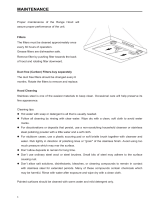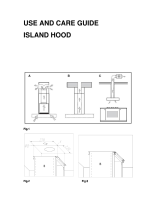XO XOMI36G is a powerful range hood designed to efficiently remove smoke, grease, and odors from your kitchen. With its sleek design and various features, it can elevate your cooking experience and keep your kitchen air clean and fresh.
XO XOMI36G is a powerful range hood designed to efficiently remove smoke, grease, and odors from your kitchen. With its sleek design and various features, it can elevate your cooking experience and keep your kitchen air clean and fresh.




















-
 1
1
-
 2
2
-
 3
3
-
 4
4
-
 5
5
-
 6
6
-
 7
7
-
 8
8
-
 9
9
-
 10
10
-
 11
11
-
 12
12
-
 13
13
-
 14
14
-
 15
15
-
 16
16
-
 17
17
-
 18
18
-
 19
19
-
 20
20
-
 21
21
-
 22
22
-
 23
23
-
 24
24
-
 25
25
-
 26
26
-
 27
27
-
 28
28
XO XOMI36G is a powerful range hood designed to efficiently remove smoke, grease, and odors from your kitchen. With its sleek design and various features, it can elevate your cooking experience and keep your kitchen air clean and fresh.
Ask a question and I''ll find the answer in the document
Finding information in a document is now easier with AI
Related papers
Other documents
-
Warehouse of Tiffany RL6044 Operating instructions
-
Warehouse of Tiffany RL79384 Operating instructions
-
ZANKER ZK60X User manual
-
CDA EVP9SS Installation guide
-
Campomatic KI590TSL Owner's manual
-
Zephyr GU4/MR11 Installation guide
-
 Geek Chef GWS-A30A User guide
Geek Chef GWS-A30A User guide
-
Hallman SV198F36 Operating instructions
-
AEG C6192D-M User manual
-
 Yosemite Home Decor MIPH36S-4H User manual
Yosemite Home Decor MIPH36S-4H User manual





























